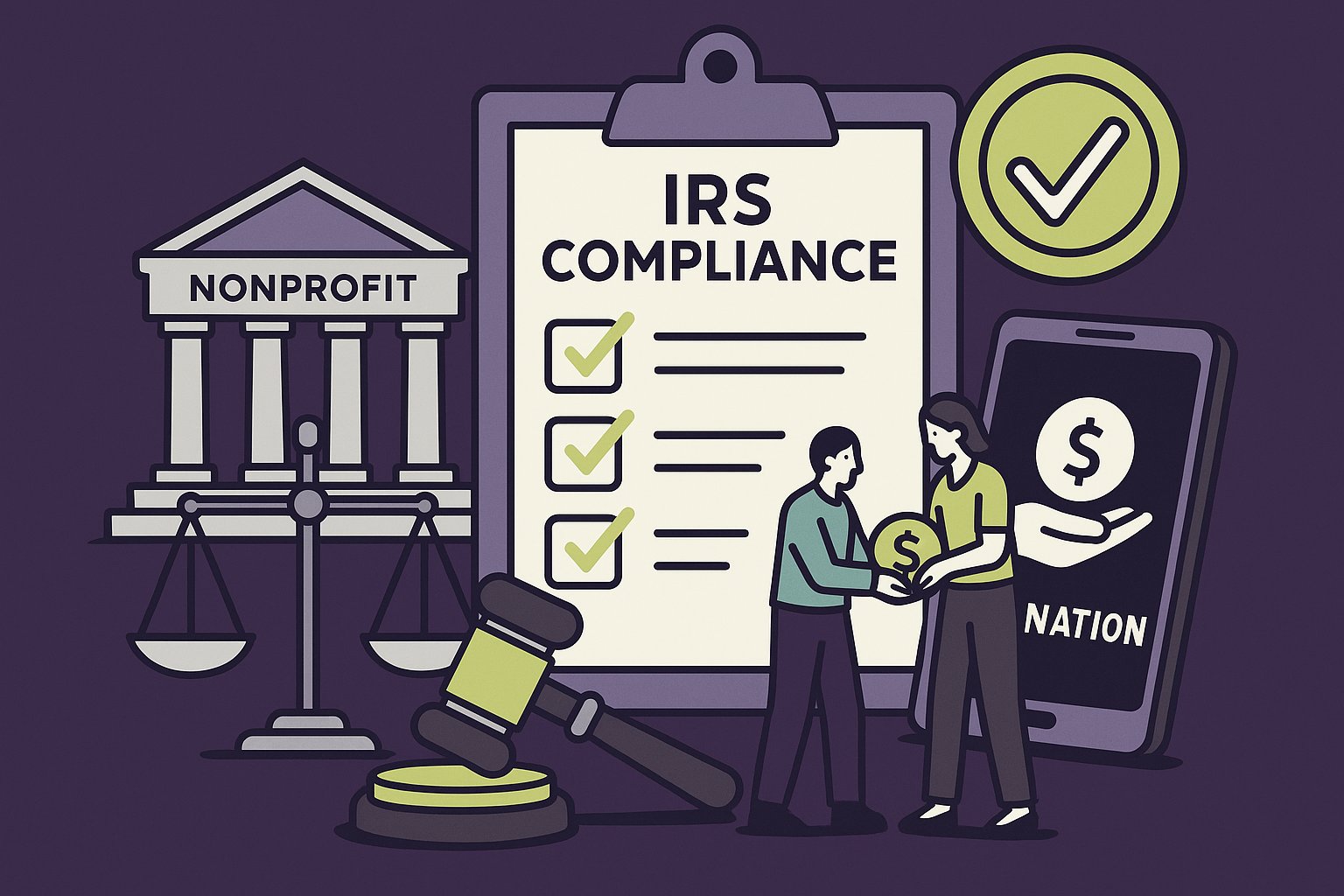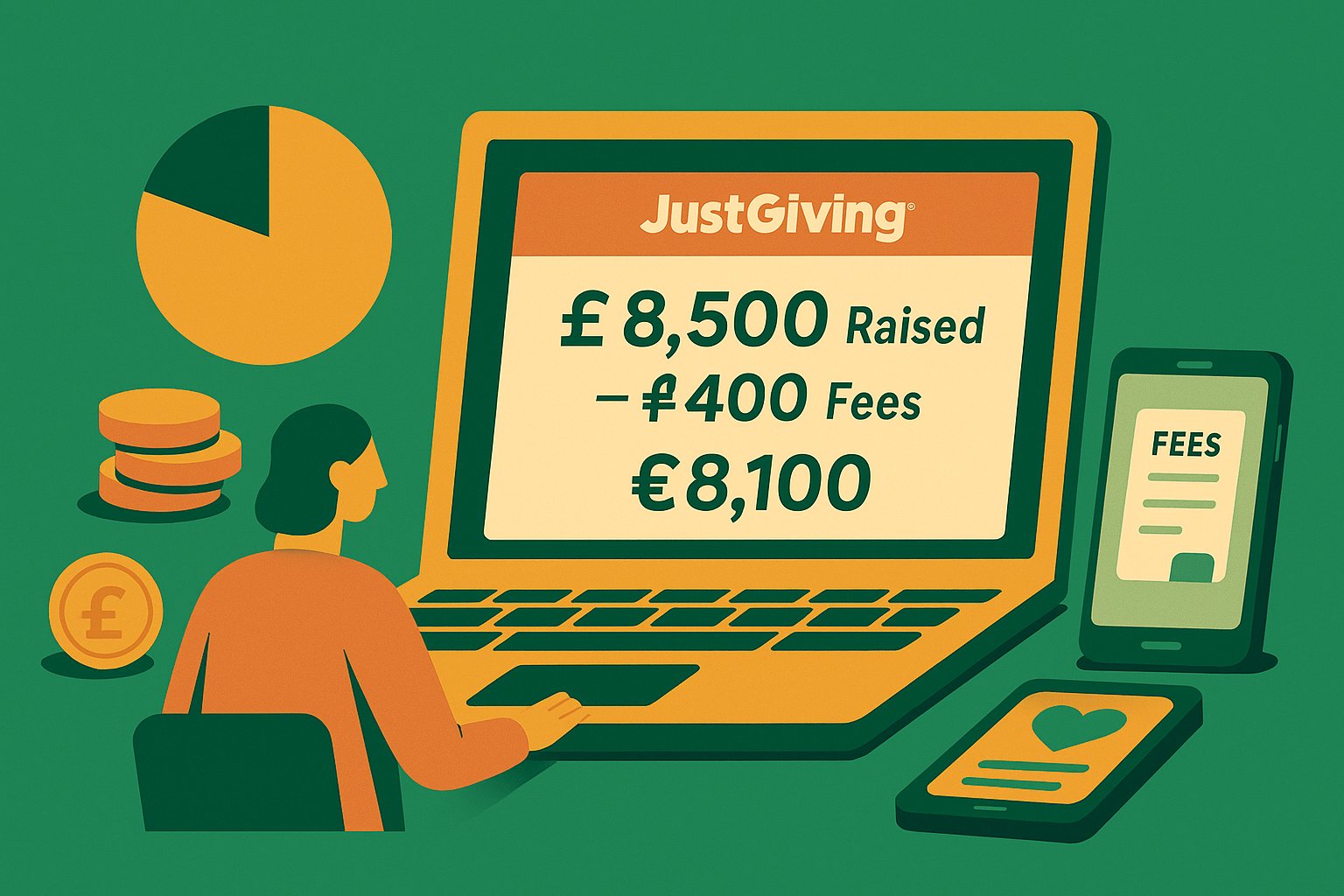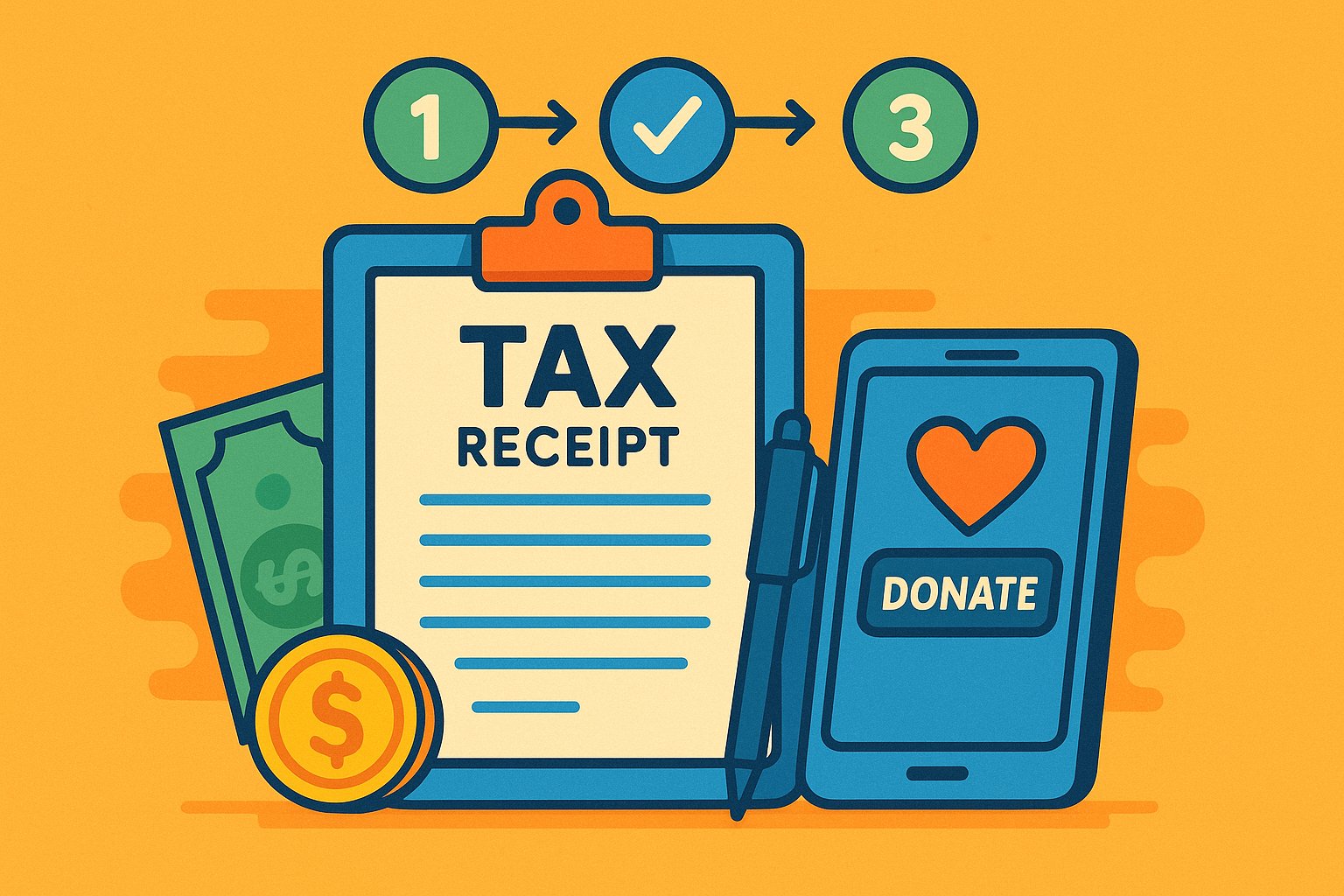Laying the Groundwork for Ethical Crowdfunding
Crowdfunding has revolutionized the way nonprofits engage with communities, inviting supporters from around the globe to fuel impactful projects. However, navigating the intricate rules set forth by the Internal Revenue Service (IRS) is essential to preserve your nonprofit’s tax-exempt status and maintain donor trust. When campaigns surge in popularity, the line between a simple fundraising drive and a complex financial undertaking can blur. To build a campaign that not only resonates emotionally but also remains firmly within regulatory boundaries, nonprofits must lay a strong foundation. By understanding key IRS guidelines, structuring donation flows accurately, and crafting transparent messaging, organizations can leverage crowdfunding without risking costly penalties or jeopardizing their exempt status. This article delves into practical strategies to ensure IRS compliance at every stage of your nonprofit’s crowdfunding journey, offering insights that blend creativity with professionalism and maintain an engaging, accessible tone throughout.
Grasping the IRS’s View on Crowdfunding Donations
At its core, the IRS classifies most funds raised through crowdfunding as contributions rather than sales revenue. For a 501(c)(3) organization, this distinction is pivotal: contributions can be tax-deductible for donors, bolstering the appeal of your campaign. Yet, if donors receive substantial goods or services in return—beyond nominal tokens like a thank-you postcard—the IRS may view the transaction differently, potentially reclassifying part of the donation as unrelated business income. Moreover, campaign titles or reward structures that suggest a benefit to the donor can trigger increased scrutiny. To stay on the right side of the law, nonprofits must design campaigns to emphasize charitable intent. Clearly articulate how funds further the organization’s exempt purpose and avoid language that implies benefits or commercial transactions. Cultivating a transparent narrative around the nonprofit’s mission and the specific use of funds reassures both donors and the IRS that your crowdfunding is a legitimate charitable endeavor.
Defining Contributions Versus Income: The Crowdfunding Distinction
Crowdfunding platforms often blur the lines between charitable giving and sales. When a donor contributes $50 toward a tree-planting initiative and receives a set of notecards in return, that notecard’s fair market value must be treated as a quid pro quo contribution. Nonprofits need to establish a method for valuing any tangible rewards or benefits and then issue acknowledgments that clearly separate the tax-deductible portion from the non-deductible value. This careful accounting ensures compliance with IRS rules on contribution substantiation. If a campaign involves tiered donor benefits—such as branded merchandise, event tickets, or services—becoming adept at assigning fair market values is crucial. Documenting these valuations and communicating them accurately in donor receipts helps your nonprofit avoid misclassifying income and keeps your financial records aligned with federal guidelines.
Building a Solid Donation Tracking System
Maintaining meticulous records is perhaps the most essential step toward IRS compliance in crowdfunding. Every donation, no matter how small, should be logged in a centralized system that captures donor information, date of gift, amount, and any associated reward or benefit. Selecting a crowdfunding platform integrated with your donor management software can streamline this process, reducing manual errors and ensuring consistency. Establish internal procedures that designate a responsible individual or team to oversee data entry and reconciliation. Regularly reconcile the platform’s reports with your organization’s bank statements to quickly identify discrepancies. Accurate tracking not only simplifies annual reporting requirements—such as those on Form 990—but also equips your nonprofit to provide timely, precise acknowledgments. When donors receive immediate confirmation of their gift along with a clear statement of its tax-deductible nature, their confidence in your organization deepens, ultimately encouraging repeat giving.
Delivering Proper Donation Acknowledgments
A well-crafted donation acknowledgment letter serves multiple purposes: it fulfills IRS substantiation requirements, strengthens donor relations, and reinforces the nonprofit’s professional image. For gifts of $250 or more, the IRS mandates written acknowledgments that include the date of donation, the amount, a description of any non-cash items received in return, and a statement affirming that no goods or services were provided (if that is the case). When crowdfunding campaigns offer thank-you gifts or tiered rewards, acknowledgments must specify the fair market value of those items. Automating this process through your donor management system can save hours of manual work and minimize the risk of oversights. Ideally, acknowledgments should be sent within 30 days of the donation. Crafting a template that balances compliance language with genuine gratitude ensures supporters feel appreciated while meeting IRS standards. In doing so, your nonprofit not only remains compliant but also fosters a transparent relationship with contributors.
Understanding Required Tax Filings and Deadlines
Once your crowdfunding efforts begin to generate significant contributions, understanding the IRS forms and deadlines associated with nonprofit financial reporting becomes paramount. Form 990 is the centerpiece of annual reporting for tax-exempt organizations, requiring a comprehensive breakdown of revenue streams, including crowdfunding proceeds. If your nonprofit receives more than $25,000 in gross receipts, it must file Form 990; smaller organizations may use Form 990-EZ or Form 990-N (the e-Postcard) if gross receipts fall below $50,000. Additionally, any in-kind donations or rewards provided to donors must be accounted for to prevent overstating charitable revenue. Depending on your state, you may also need to register for charitable solicitation in jurisdictions where crowdfunding reaches new audiences. Familiarize yourself with deadlines—Form 990 typically must be filed by the 15th day of the fifth month after the fiscal year’s end—and allocate sufficient time and resources to complete these filings accurately. Proactive planning prevents last-minute scrambling and potential penalties.
Preventing Unrelated Business Income Traps
Crowdfunding campaigns can inadvertently generate unrelated business income (UBI) if nonprofit organizations offer substantial goods, services, or commercial activities unrelated to their exempt purpose. While nominal thank-you gifts are generally acceptable, offering high-value rewards, branded merchandise, or event tickets can cross the threshold, triggering UBI tax obligations. If a crowdfunding campaign includes substantial perks—such as exclusive experiences, high-end merchandise, or paid attendance to special events—the IRS may treat those portions of proceeds as taxable income. To avoid this pitfall, carefully assess any reward tiers and limit tangible benefits to token acknowledgments, such as branded stickers or handwritten notes. When planning campaigns that could involve significant donor incentives, consider structuring them under a fiscal sponsorship model or through a related for-profit entity to sidestep jeopardizing your tax-exempt status. Consulting with a tax advisor versed in nonprofit UBI regulations helps ensure that your crowdfunding efforts remain aligned with IRS directives.
Crafting Transparent Campaign Messaging
Language matters in the nonprofit world, particularly when soliciting funds through crowdfunding. Campaign pages should clearly articulate the nonprofit’s mission, how funds will be used, and the charitable impact anticipated. Avoid phrases that could imply a direct return on a donor’s financial investment, such as “invest in our cause for guaranteed results.” Instead, emphasize the collective benefit: “Join us in providing clean water to communities in need.” Transparency builds credibility with both donors and regulators. If rewards or acknowledgments are offered, specify in plain terms that these are tokens of appreciation and indicate their approximate value. Embedding visual updates—such as progress bars tied to specific milestones—and sharing real-time success stories can reinforce authenticity, but be careful not to shift focus away from the charitable nature of contributions. By crafting persuasive yet compliant messaging, nonprofits can drive engagement while maintaining clear lines of communication that satisfy IRS expectations.
Collaborating with Financial and Legal Experts
No matter how meticulous your internal processes, the complexity of IRS regulations often warrants collaboration with external experts. Engaging a certified public accountant (CPA) experienced in nonprofit accounting or a legal advisor with a background in nonprofit law can prove invaluable. These professionals can review campaign structures, assess potential UBI implications, verify donor acknowledgment templates, and confirm that your financial tracking aligns with best practices. They can also advise on state-level fundraising registrations and evolving crowdfunding platform policies. Establishing an ongoing relationship with advisors before launching major campaigns ensures that compliance checks become routine rather than reactive. During campaign planning, invite these experts to periodically review your strategy and provide written sign-offs, creating a documented trail of due diligence. Such proactive collaboration not only mitigates risk but also signals to donors that your nonprofit is committed to transparency and sound governance.
Elevating Donor Trust Through Compliance
In today’s digital age, donors have unprecedented access to information. They expect nonprofits to demonstrate accountability, especially when contributions are solicited through online platforms. Achieving and showcasing IRS compliance can become a powerful trust-building tool. Highlight your nonprofit’s tax-exempt status prominently on the crowdfunding page, and consider including a concise FAQ section that addresses common donor concerns about tax deductibility and how funds are spent. Share annual impact reports or audit summaries that underscore your financial stewardship. By consistently delivering detailed updates on campaign progress—complete with stories from beneficiaries or on-the-ground photos—you reassure backers that their donations are managed responsibly. This transparency can translate into deeper engagement and higher retention rates, as donors feel confident that their support is both meaningful and managed within a robust compliance framework.
Charting a Compliant Future
Crowdfunding offers nonprofits an exciting avenue to engage new audiences, amplify missions, and raise critical funds. Yet, without vigilant attention to IRS guidelines, even the most inspiring campaigns can face setbacks that erode donor confidence and strain financial resources. By understanding the IRS’s classification of contributions, instituting rigorous tracking and acknowledgment processes, and seeking expert guidance, nonprofits can lock in compliance without sacrificing creative storytelling or donor enthusiasm. As crowdfunding platforms evolve and regulations adapt, staying informed and proactive is essential. Embrace compliance not as a hurdle, but as a pathway to building stronger, more transparent relationships with supporters. Through diligent planning and a commitment to ethical fundraising, your nonprofit can harness the power of crowdfunding to expand its impact, secure its tax-exempt future, and continue transforming lives.




